ABOUT ECUADOR BIRDING

NEOTROPICS
ECUADOR
| Area (SqMi): | 98,985 |
| # Species: | 1695 |
| # Excl Vagrants: | 1610 |
| # Endemics: | 45 |
| # Near Endemics: | 195 |
| Species/1000 SqMi: | 16.3 |
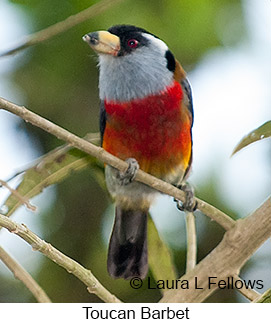 A single birding tour to Ecuador is hardly adequate to do the country justice. Most Ecuador birding tours are based in the north. They typically cover some or all of the western Andes Mountains, eastern Andes Mountains, and occasionally the Amazon headwaters along the Napo River. More exotic birding tours go to the south, where some 150 species not found in the north can be found. Birding tours to the south are becoming increasingly popular as people discover all that southern Ecuador has to offer.
A single birding tour to Ecuador is hardly adequate to do the country justice. Most Ecuador birding tours are based in the north. They typically cover some or all of the western Andes Mountains, eastern Andes Mountains, and occasionally the Amazon headwaters along the Napo River. More exotic birding tours go to the south, where some 150 species not found in the north can be found. Birding tours to the south are becoming increasingly popular as people discover all that southern Ecuador has to offer.
The great bird diversity of Ecuador is a direct result of the country's topography. The Andes Mountains divides the country into east and west and acts as a barrier for low and mid-elevation birds, preventing them from interbreeding between the two slopes of this towering mountain range, resulting in different species composition on the two sides of the country. By visiting various altitudinal zones in east and west, it's possible to see over 500 species of birds on a single 2-week tour. Especially spectacular is the high diversity of hummingbirds and tanagers.
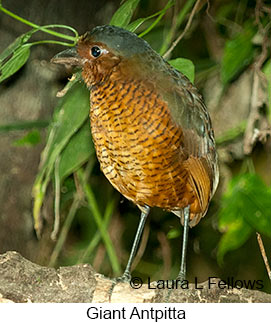 Northern Ecuador features some of the country's best known birding locales. The west slope of the Andes and the lowlands of the northwest encompass part of the Choco Endemic Bio-region where many endemics and near endemics are found. The Mindo and Tandayapa Valleys are renowned for the 20+ species of hummingbirds and an amazing array of middle elevation cloud-forest birds. Refugio Angel Paz is a private farm the owner decided to preserve. He pioneered the technique of conditioning rare antpittas to come onto the trail for food, a technique now employed at several other places in Ecuador as well. The eastern Andes has a whole new array of species not found in the west, and an altitudinal transect can produce over 200 species in less than a week. Guango Reserve at 9000 ft elevation attracts high elevation hummingbirds and other temperate forest birds, while San Isidro is famed for the many middle elevation birds found there. A new lodge on the Sumaco Road is a great place to find lower elevation birds in the subtropical zone.
Northern Ecuador features some of the country's best known birding locales. The west slope of the Andes and the lowlands of the northwest encompass part of the Choco Endemic Bio-region where many endemics and near endemics are found. The Mindo and Tandayapa Valleys are renowned for the 20+ species of hummingbirds and an amazing array of middle elevation cloud-forest birds. Refugio Angel Paz is a private farm the owner decided to preserve. He pioneered the technique of conditioning rare antpittas to come onto the trail for food, a technique now employed at several other places in Ecuador as well. The eastern Andes has a whole new array of species not found in the west, and an altitudinal transect can produce over 200 species in less than a week. Guango Reserve at 9000 ft elevation attracts high elevation hummingbirds and other temperate forest birds, while San Isidro is famed for the many middle elevation birds found there. A new lodge on the Sumaco Road is a great place to find lower elevation birds in the subtropical zone.
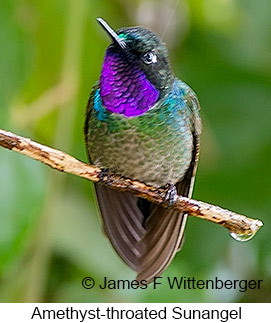 The Amazon lowlands supports over 500 species of birds but it's not possible to see them all in a single visit. Many species are present in low densities and move about looking for widely scattered fruiting trees. Two clay licks along the Napo River attract several species of parrots and macaws, while observation towers built into giant Kapok trees allow viewing of forest canopy birds. Exploring flooded forests in dugout canoes paddled by indigenous guides is an experience not to be missed.
The Amazon lowlands supports over 500 species of birds but it's not possible to see them all in a single visit. Many species are present in low densities and move about looking for widely scattered fruiting trees. Two clay licks along the Napo River attract several species of parrots and macaws, while observation towers built into giant Kapok trees allow viewing of forest canopy birds. Exploring flooded forests in dugout canoes paddled by indigenous guides is an experience not to be missed.
Southern Ecuador is less traveled but offers extraordinary birding opportunities. It features a great variety of endemics characteristic of the Tumbesian and Maranon Endemic Areas that also extend into northern Peru, the newly discovered Jocotoco Antpitta, and such unusual birds as the Horned Screamer of Manglares Churute Reserve, the El Oro Parakeet and El Oro Tapaculo discovered in the 1980's, and a great many parrots, parakeets, hummingbirds, tanagers, and finches not found further north. A series of reserves operated by the Jocotoco Foundation provide basic accommodations and extraordinary birding all over the south.
ABOUT ECUADOR BIRD PHOTOGRAPHY
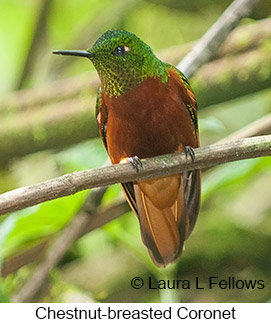 Ecuador is a wonderful place for bird photography. At several lodges in the north, hummingbirds stage beautifully as they approach feeders. They are constantly there and constantly busy. Over 30 species can be photographed in a 2-week period by visiting both slopes of the Andes. Some of the best places are Tandayapa Bird Lodge, Bellavista Cloud Forest Reserve, and Guango Lodge. The Andean Cock-of-the-Rock lek at Refugio Angel Paz near Mindo is a star attraction, though flash is not allowed and the birds are only there for a short time at first light. Rare antpittas conditioned to come into the open can be photographed at Refugio Angel Paz, at San Isidro in the eastern Andes, and at Tapichalaca Reserve in the south. An endless diversity of forest birds can be photographed by walking trails through the numerous reserves in the country. Photographic opportunities also abound in the Napo lowlands, where parrots are readily photographed at clay licks and forest birds can be photographed while paddling through flooded forest or walking trails through forests on dry land.
Ecuador is a wonderful place for bird photography. At several lodges in the north, hummingbirds stage beautifully as they approach feeders. They are constantly there and constantly busy. Over 30 species can be photographed in a 2-week period by visiting both slopes of the Andes. Some of the best places are Tandayapa Bird Lodge, Bellavista Cloud Forest Reserve, and Guango Lodge. The Andean Cock-of-the-Rock lek at Refugio Angel Paz near Mindo is a star attraction, though flash is not allowed and the birds are only there for a short time at first light. Rare antpittas conditioned to come into the open can be photographed at Refugio Angel Paz, at San Isidro in the eastern Andes, and at Tapichalaca Reserve in the south. An endless diversity of forest birds can be photographed by walking trails through the numerous reserves in the country. Photographic opportunities also abound in the Napo lowlands, where parrots are readily photographed at clay licks and forest birds can be photographed while paddling through flooded forest or walking trails through forests on dry land.
WHY VISIT ECUADOR
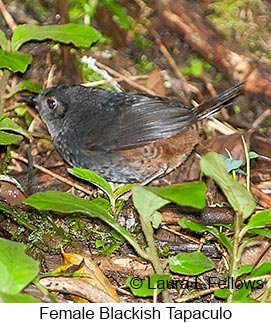 Ecuador is simply beyond belief as a tropical birding and bird photography destination. Some 1580 species have been recorded there, excluding species found only in the Galapagos Islands. A well-designed 2-week birding tour to the country is likely to record over 500 species of birds. A single visit can produce 60 species of hummingbirds, 20 species of antbirds, 15 species of antpittas, 70 species of flycatchers, and 70 species of tanagers. Ecuador is home to some 60 endemic birds found nowhere else in the world, the gigantic Andean Condor, the bizarrely primitive Hoatzin, and the uniquely beautiful lek-breeding Andean Cock-of-the-Rock. At several reserves rangers have conditioned some of the rarest antpittas to come out on the trail for native caterpillars, making it possible to see and photograph species like Giant Antpitta, the recently discovered Jocotoco Antpitta, and others. All that combined with very safe travel conditions and fine ecolodges makes Ecuador a premier birding destination in South America and the Neotropics.
Ecuador is simply beyond belief as a tropical birding and bird photography destination. Some 1580 species have been recorded there, excluding species found only in the Galapagos Islands. A well-designed 2-week birding tour to the country is likely to record over 500 species of birds. A single visit can produce 60 species of hummingbirds, 20 species of antbirds, 15 species of antpittas, 70 species of flycatchers, and 70 species of tanagers. Ecuador is home to some 60 endemic birds found nowhere else in the world, the gigantic Andean Condor, the bizarrely primitive Hoatzin, and the uniquely beautiful lek-breeding Andean Cock-of-the-Rock. At several reserves rangers have conditioned some of the rarest antpittas to come out on the trail for native caterpillars, making it possible to see and photograph species like Giant Antpitta, the recently discovered Jocotoco Antpitta, and others. All that combined with very safe travel conditions and fine ecolodges makes Ecuador a premier birding destination in South America and the Neotropics.
OTHER COUNTRIES
IN THE NEOTROPICS
BIRDING LOCALES





